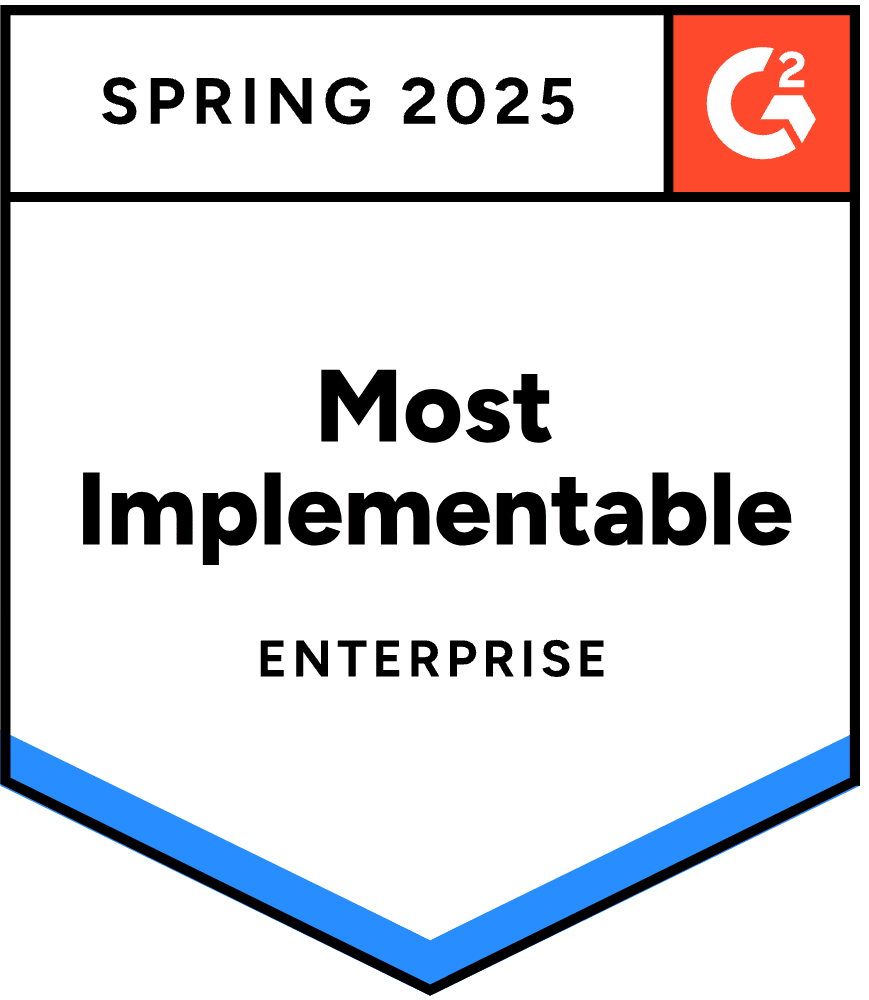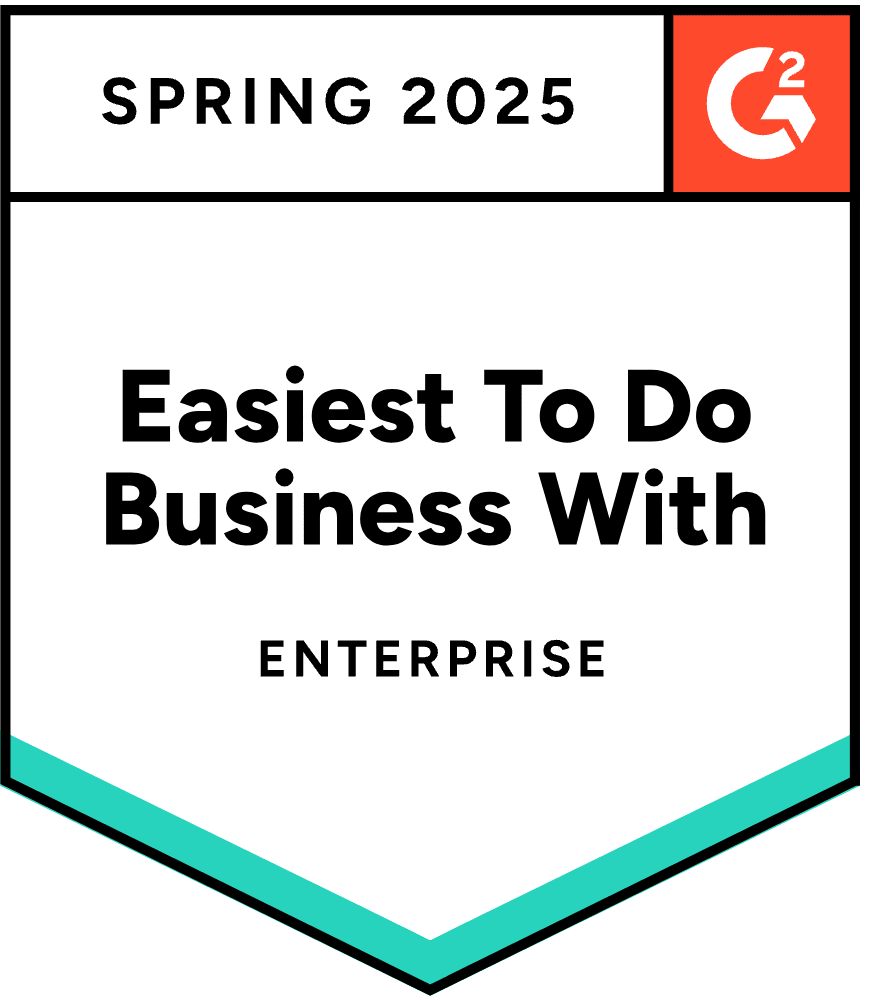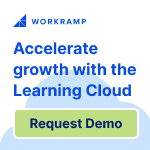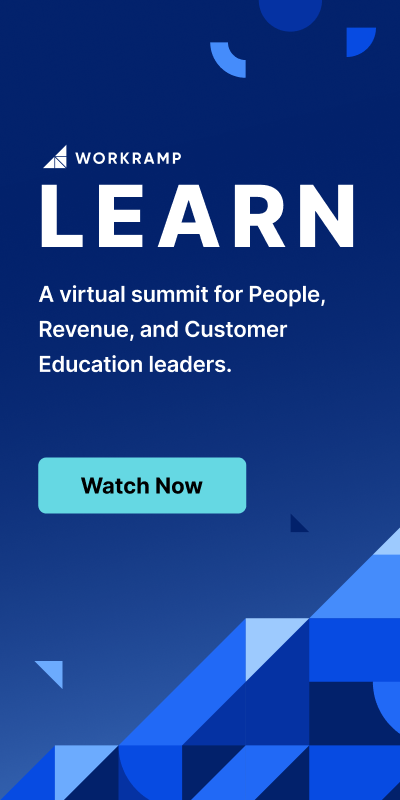What is an eLearning System and How Does it Work?
Anna Spooner | WorkRamp Contributor
View bioLearning Tips Straight to Your Inbox
An eLearning system provides resources to create courses and learning materials. For example, a learning management system (LMS) is an example of an eLearning system.
eLearning platforms can be software that team members access on a computer or online or cloud-based options (which we’ll learn more about later). eLearning platforms provide a central hub for trainers and learners to access eLearning content.
eLearning platforms can be used for various needs, including new hire onboarding, skill development, compliance training, sales coaching, customer education, continuous learning, and more.
Read more: Make eLearning Engaging in 7 Steps
eLearning systems have transformed how we think about training, making it more accessible and flexible.
In 2018, a LinkedIn study found that 90 percent of companies offer digital learning, and 58 percent of employees prefer to learn at their own pace. The days of traditional in-person learning were long gone even then.
By late 2020, the pandemic caused explosive growth in the eLearning industry. The market went from $144 billion in 2019 to $374 billion in December 2020, and this trend will only continue to grow with hybrid and remote teams.
With the right eLearning system, you can tailor your learning and development (L&D) program to meet the specific needs of your employees and organization. The key is understanding how to choose the best platform for your specific needs.
Discover the features and benefits of an eLearning system and how to choose the best one for your organization.
In this post:
What is the difference between eLearning and online learning
eLearning and online learning are very similar in that both can be completed online with an internet-connected device.
The difference between the two modalities is that online learning traditionally includes more interaction between instructors and participants, whereas eLearning is self-paced or asynchronous.
What should an eLearning system do?
A high-quality eLearning platform makes it easy to organize your learning content so it’s accessible to employees. This might mean on-demand microlearning, new hire training modules, sales training, customer education, partner or vendor training, and more.
The best eLearning system is hands-off for facilitators, using video and text to deliver information without in-the-moment participation from trainers or L&D team members. It should also provide an easy way to track learner progress and help show the ROI of your training initiatives.
An eLearning system is an asset to your L&D team because it lets you set up automations to remind users to complete courses or retraining modules, removing the need to manually track or set up reminders.
What should an eLearning system have?
As you compare various eLearning platform options, look for specific features that help make the system effective, easy to use, and beneficial for your organization and specific use cases.
Here are some of the most essential features of an eLearning platform.
Microlearning
Microlearning uses short, bite-sized pieces of training to engage learners. As a result, microlearning can improve long-term retention by up to 80 percent. To reap the benefits of microlearning, training content should be quick, flexible, personalized, and easy to use and access.
Examples of microlearning include:
- Short videos
- Infographics
- Mobile apps
- Pop-ups and error messages
“Microlearning is the way to go. If there’s one thing people don’t have right now, it’s time.”
–Seth Jones, Manager, Customer Success, Vanta
Mobile-first learning
As the name implies, mobile-first learning means users can access training content from a mobile device, like a tablet or smartphone. This makes learning more convenient since employees can access content and training modules on their own time and even on the go.
Because mobile learning makes content more accessible, it can help to increase training completion rates.
Examples of mobile learning include:
- Videos
- Interactive tutorials
- Assessments
- Quizzes
- Live lessons
Cloud-based learning
Like mobile-first learning, cloud-based learning makes training materials more accessible because they’re stored in the cloud vs. tied to a single computer or system.
Learners don’t need to meet in person or be in the office to complete training and generally don’t need to install software on their computers.
Look for an eLearning platform that allows cloud-based learning to help boost training completion rates.
Read more: What is a Cloud-Based Learning Management System?
Gamification and prizes
Gamification means adding fun, interactive elements to eLearning content. This makes learning more engaging, encouraging learner motivation and participation, enhancing the overall experience, and increasing retention.
eLearning systems that incorporate gamification elements, like competitions, scoring and point systems, challenges, and prizes, can help diversify training content and make learning more engaging.
Read more: The Rise of Edutainment: Supercharge Your Remote Learner Engagement
Integrations
The ideal eLearning platform will integrate with the programs and applications your team members use regularly.
For example, WorkRamp integrates with sales and support tools like Salesforce, Gong, and Zendesk, HR platforms like BambooHR and Rippling, and external learning platforms like Quantum Metric and Twilio.
When your eLearning system integrates with the tools in your tech stack, it creates a seamless experience for users and allows you to automate processes.
Customization
The ideal eLearning platform should be customizable for your organization’s specific needs. An eLearning system shouldn’t be one-size-fits-all but instead offer the features your team needs most and be applicable across different teams. Without customization options, you may pay for features you don’t need.
With WorkRamp, you can create learning content using features like drag-and-drop content authoring tools to customize courses and learning materials.
Quantum Metric uses WorkRamp to power internal and external training for thousands of global learners. With WorkRamp, Quantum Metric could train and certify 75 percent of customers on product offerings, effectively onboard 90 new employees in 90 days, democratize training content, and save time and resources with a consolidated platform.
“WorkRamp has allowed us to take a different approach to training—it’s given us one magical space where we can put on our creative design hats to design and share learning materials with our entire community of customers and employees.”
–Chauncy Cay Ford, Director of Customer Enablement, Quantum Metric
Security
Security is important for any eLearning system, especially if it offers mobile and cloud-based learning. Ample security helps protect private or sensitive company data and confidential information.
The best eLearning platforms use single sign-on (SSO) and advanced encryption techniques to ensure security and prevent unauthorized access.
Different content formats
Using different content types and a blended learning approach can help keep users engaged and support team members with multimodal learning styles.
eLearning content comes in various formats, including videos, eBooks, slide decks, podcasts, virtual classrooms, case studies, and more.
Read more: eLearning Content: 24 Types to Include in Training
The top benefits of an eLearning system
Why have so many companies adopted eLearning? Because this approach to training offers significant advantages over traditional “classroom and instructor” style teaching.
Improved ROI
Deploying training with an eLearning system costs less than traditional methods. For example, you don’t need to reserve a room, schedule resources such as a projector, laptop, and instructor, or take time out of employees’ schedules to conduct training.
Instead, you have easy-to-use courses available on-demand, allowing your teams to complete training on their time.
Putting these together, you have less-expensive, more effective training, which dramatically improves the ROI of L&D initiatives.
Shorter ramp times
Effective eLearning gets new employees up to speed faster, which allows them to become productive
sooner.
Because you can use methods like microlearning, gamification, and various content types to increase engagement and retention, new team members will learn the ropes of their roles more quickly. This can reduce costs while improving productivity and profitability.
You can also roll out new information to existing employees quickly, making a big difference in everything from process improvements to updated compliance regulations. When training takes less time and is easier to remember, everyone benefits.
Easy-to-track results
How is your latest training program impacting your organization’s bottom line? How many people have completed training?
It was challenging to answer these questions in the past, but eLearning platforms make it easy to access reporting on learner progress. For example, when you can show that most of your employees have completed a training initiative, you can tie training programs to improved company metrics.
From knowing who’s completed training and who’s lagging to being able to show a clear ROI for L&D efforts, reporting in an eLearning system helps you show the value of L&D and make a case for additional resources, growth, and more.
Flexibility
An eLearning system makes creating learning materials and completing training easy. Updating learning content without managing printed materials and manual distribution is also more convenient.
Your employees also have flexibility as they take eLearning courses. Team members can choose days and times that work for them instead of finding a time that works for the entire team. In addition, employees can take a microlearning course anywhere—at the office, working from home, or traveling. Everyone has access, no matter where they are.
When your training materials match your organizational needs and objectives, and learners can complete training easily, you’ll have better completion rates, implementation, and, ultimately, a faster increase in targeted metrics.
Why an eLearning system is vital to the success of your business
Implementing an eLearning platform can make your L&D team more efficient and effective. Not only that, but your team will retain more of what they learn when you can take advantage of strategies like microlearning, gamification, multiple content formats, and more.
An eLearning system can save significant money by reducing or eliminating resource-heavy in-person training, travel, and other expenses. Your L&D team will spend less time organizing and tracking learning. As a result, your team can focus on more important things, such as identifying organizational priorities and creating training to support them.
Spending less time and money on more practical training is a recipe for a significant increase in profitability, which every organization needs to succeed.
Elevate learning with WorkRamp
The Learning Cloud from WorkRamp is a single platform to power all of your employee and customer learning needs. The Employee Learning Cloud offers a people-centric user experience, streamlined admin experience, and centralized employee learning. The Learning Cloud integrates with your existing tech stack to provide a seamless experience for team members.
Ready to learn more about how the Learning Cloud can help you create and deploy effective employee training programs? Contact us to schedule a free, personalized demo.
Complete the form for a custom demo.
Recent Posts
- Onboarding with an LMS: How to Set New Hires Up for Success July 16, 2025
- Why Secure LMS Platforms Are a Must for Regulated Industries July 10, 2025
- Top LMS Integrations That Power Smarter, Faster Learning July 2, 2025
- Introducing WorkRamp Analytics Studio: Unlocking Your Data Insights with AI June 30, 2025
- 11 AI LMS for AI-Powered Learning June 27, 2025
Anna Spooner
WorkRamp ContributorAnna Spooner is a digital strategist and marketer with over 11 years of experience. She writes content for various industries, including SaaS, medical and personal insurance, healthcare, education, marketing, and business. She enjoys the process of putting words around a company’s vision and is an expert at making complex ideas approachable and encouraging an audience to take action.
You might also like
Leadership insights for people teams
It’s time to evolve our approach to leadership and employee development. Learn how to drive employee engagement and empower teams to do their best work.
Read More
Simple steps to promote continuous learning and improvement
Check out these three actionable ways to expand and improve your L&D program.
Read More
What are the benefits of online learning?
When it comes to professional development and continued learning, online courses and programs offer several advantages over traditional in-person options.
Read More
Decrease Ramp Time and Increase Revenue
Get in touch to learn how WorkRamp can help you achieve your learning and development goals.
Request a Demo




